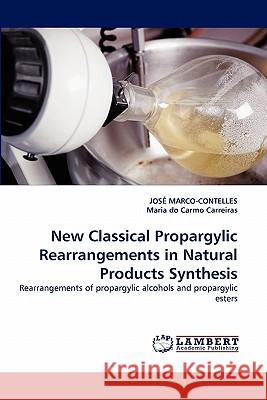New Classical Propargylic Rearrangements in Natural Products Synthesis » książka
New Classical Propargylic Rearrangements in Natural Products Synthesis
ISBN-13: 9783843353281 / Angielski / Miękka / 2010 / 60 str.
In this book we highlight the strong synthetic potential and scope of transition metal-catalyzed rearrangement reactions for fully economical and complex carbon-carbon bond forming reactions. The Meyer-Schuster and the Rupe rearrangements are emerging as the methods of choice for the homologation of carbonyl compounds into, -unsaturated aldehydes and ketones, particularly useful for the synthesis of many hindered ketones. The Rautenstrauch-I and Rautenstrauch-II rearrangements of readily propargylic derivatives are very useful reactions for the synthesis of complex cyclopentenones, and bicyclo n.1.0] enol carboxylates in high chemical yields, which proceed under mild reaction conditions with high stereoselectivity, and total transfer of chirality. In the case of Rautenstrauch-II, the basic-methanolysis of the resulting compounds provides bicyclo n.1.0]ketones, valuable building blocks for the preparation of natural products. A reaction mechanism has been advanced, and confirmed by experimental evidences, which supports the involvement of metallo-carbenes as key species formed through a cyclopropanation event that precedes the 1,2-acyloxy migration.
In this book we highlight the strong synthetic potential and scope of transition metal-catalyzed rearrangement reactions for fully economical and complex carbon-carbon bond forming reactions. The Meyer-Schuster and the Rupe rearrangements are emerging as the methods of choice for the homologation of carbonyl compounds into α,β-unsaturated aldehydes and ketones, particularly useful for the synthesis of many hindered ketones. The Rautenstrauch-I and Rautenstrauch-II rearrangements of readily propargylic derivatives are very useful reactions for the synthesis of complex cyclopentenones, and bicyclo[n.1.0] enol carboxylates in high chemical yields, which proceed under mild reaction conditions with high stereoselectivity, and total transfer of chirality. In the case of Rautenstrauch-II, the basic-methanolysis of the resulting compounds provides bicyclo[n.1.0]ketones, valuable building blocks for the preparation of natural products. A reaction mechanism has been advanced, and confirmed by experimental evidences, which supports the involvement of metallo-carbenes as key species formed through a cyclopropanation event that precedes the 1,2-acyloxy migration.











